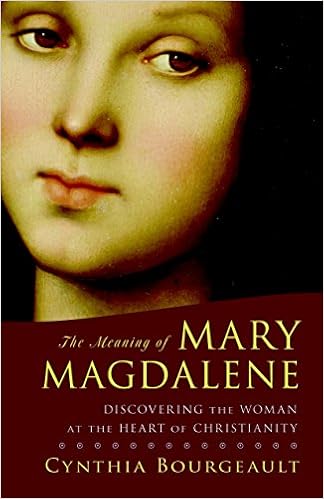
Information about the life of Mary Magdalene come from Canonical gospels included in the New Testament, plus other texts which were not included when the New Testament was finalised. Gnostics also believe there was a gospel of Mary, which may have been written by Mary Magdalene or some later follower.
In Luke 8:1-3, there is a passage where Mary Magdalene had seven demons cast out by Jesus.
The Twelve were with him, and also some women who had been cured of evil spirits and diseases: Mary (called Magdalene) from whom seven demons had come out—and many others. These women were helping to support them out of their own means.
— Luke 8:1-3

Mary Magdalene is mentioned by other gospel writers for being present at the crucifixion, including staying after male disciples had left the scene. In John 20:16 and Mark 16:9 Mary Magdalene is also mentioned as the first witness to the resurrection of Jesus. The gospels of Mark and Luke report that the other male disciples did not believe what Mary reported until they saw with their own eyes.
In apocryphal and Gnostic texts, the character of Mary Magdalene is further developed, suggesting she was one of the most advanced disciples and had visionary power herself. Other Gnostic writings, such as the Gospel of Phillip, suggest that the closeness of Mary Magdalene created tensions with other disciples, who found it difficult for a woman to have more influence and prestige than themselves.
The early church, which came to be dominated by men, tended to downplay the role of women. Therefore, it is significant that even in the canonical gospels, Mary Magdalene appears very devoted and close to Jesus. The fact she was the first witness to his resurrection is significant because, at the time, women generally were not considered reliable as witnesses.
In the Gospel of Mary, first discovered in 1896, Mary Magdalene again appears to be the most prominent disciple of Jesus.
“Peter said to Mary, “Sister we know that the Savior loved you more than the rest of women. Tell us the words of the Savior which you remember which you know, but we do not, nor have we heard them.” Mary answered and said, “What is hidden from you I will proclaim to you.” And she began to speak to them these words: “I,” she said, “I saw the Lord in a vision and I said to Him, Lord I saw you today in a vision.”
Some scholars have taken this as evidence that Mary Magdalene was the ‘Beloved disciple’ mentioned in the gospel of John.
The Eastern Orthodox church has always seen Mary Magdalene as a virtuous woman, and a different person to the repentant Mary who anoints Jesus in the gospel of Luke.
In the Catholic tradition, Mary Magdalene has been more associated with a repentant sinner. This view has often been romanticised in art, and was given credence in a speech by Pope Gregory the Great in the sixth century. However, the Catholic church later modified their view. In 2006, Pope Benedict XVI spoke of Mary Magdalene as “a disciple of the Lord who plays a lead role in the Gospels.”
Citation: Pettinger, Tejvan. “Biography of Mary Magdalene”, Oxford, UK – biographyonline.net. Last updated 25th September 2017.
The Meaning of Mary Magdalene
The Meaning of Mary Magdalene at Amazon
Related pages



External links
- Mary Magdalene at BBC
- Photo bottom: Guido Reni, National Gallery
- The Gospel according to Mary Magdalene at Gnostics.org

